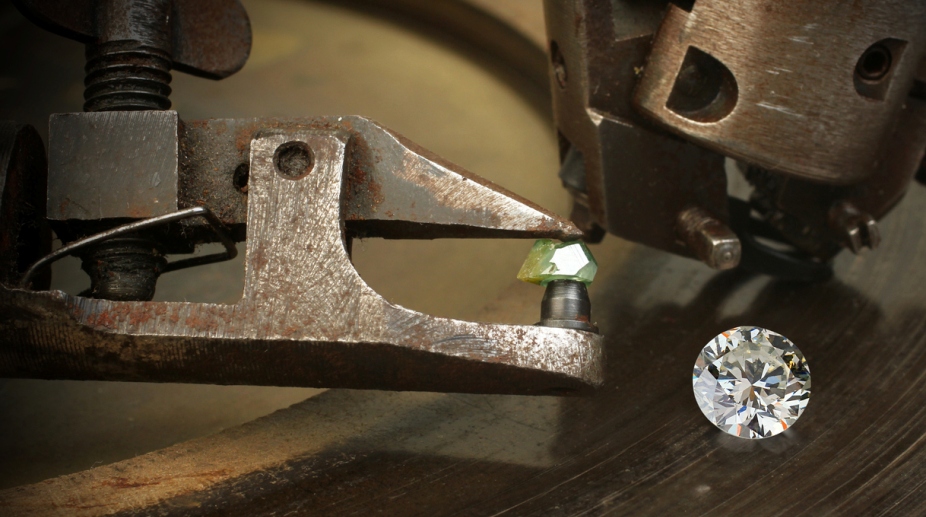An international team of researchers has found that diamond, the strongest of all natural materials, can bend and stretch much like rubber and snap back to its original shape.
A study published on Thursday in the journal Science opened the door to a variety of diamond-based devices for applications such as sensing, data storage, biocompatible in vivo imaging, optoelectronics, and drug delivery, Xinhua reported.
Advertisement
The team led by Dao Ming from the Massachusetts Institute of Technology showed that the narrow diamond needles, similar in shape to the rubber tips on the end of some toothbrushes but just a few hundred nanometers (billionths of a meter) across, could flex and stretch by as much as 9 percent without breaking, then return to their original configuration.
Ordinary diamond in bulk form has a limit of well below 1 per cent stretch, according to the researchers.
“We developed a unique nanomechanical approach to precisely control and quantify the ultra-large elastic strain distributed in the nanodiamond samples,” says Lu Yang, senior co-author and Associate Professor of mechanical and biomedical engineering at Chinese University Of Hong Kong.
Using a scanning electron microscope to ‘video record’ the process in real time, the team used a diamond probe to put pressure on the sides of the diamond nano-needles, which were grown through a special process called chemical vapour deposition and etched into final shape.
The team measured how much each needle could bend before it fractured. They found that the maximum tensile strain of the nanoscale diamond was as high as 9 per cent.
“The controlled bending deformation also enables precise control and on-the-fly alterations of the maximum strain in the nano-needle below its fracture limit,” said Dao, a paper’s senior co-author.
“This work also demonstrates that what is usually not possible at the macroscopic and microscopic scales can occur at the nano-scale where the entire specimen consists of only dozens or hundreds of atoms, and where the surface to volume ratio is large,” said Subra Suresh, President of Nanyang Technological University in Singapore.
The researchers also showed that polycrystalline diamond nano-needles, where each needle comprises many nano-size grains or crystals of diamond, can withstand a reversible, elastic stretch of up to 4 per cent before breaking.
Given that maximum flexibility can be changed in real-time to between zero to 9 per cent in nano-diamonds, there is a lot of potential for exploring unprecedented material properties.
One application goes to the nitrogen-vacancy (NV) emission centers in diamond which are extremely sensitive to magnetic fields, temperatures, ion concentrations and spin densities.
Since changes in elastic strains are sensitive to magnetic fields, potential applications could include such fields as data storage where lasers could encode data into diamonds.
In biosensing applications, NV could also be used in Magnetic Resonance Imaging (MRI) or Nuclear Magnetic Resonance (NMR) to achieve even higher accuracy and resolutions as well as 3-dimensional imaging for complex nanostructures and biomolecules.
The bended diamond could also be useful for drug delivery into cells where strong yet flexible nano-needles are needed.











